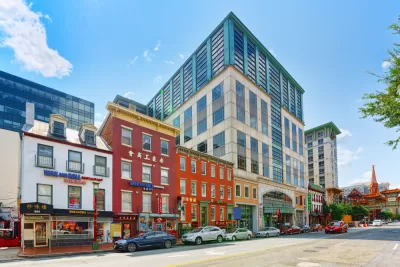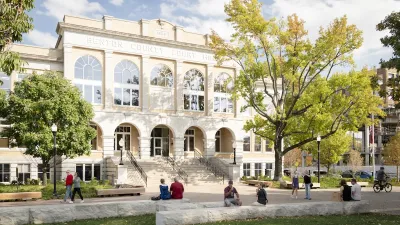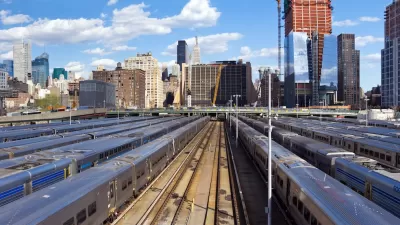A series of articles traces the history and policies behind Washington, D.C.’s efforts to promote equitable transit-oriented development.

In one part of a Greater Greater Washington series that explores the history of transit-oriented development (TOD) in the Washington, D.C. region, George Kevin Jordan outlines the ways that TOD can perpetuate existing inequities. “Today, with unaffordability and displacement in many cities at a crisis level, policymakers and activists are wondering how to ensure the benefits of TOD are more equitably distributed.”
Jordan points to changes that occurred under the administration of Mayor Anthony Williams, who took office in 1999 and “was laser-focused on bringing the city back to its former glory by building back trust, stability, and reliability within government.” As part of his plan, Williams strove to bring real estate investors back to the District and build better transit. “The District’s transformation into an in-demand city had ripple effects on many different types of growth in the region, including transit-oriented development.”
As walkable, transit-oriented neighborhoods became more desirable, housing costs rose and older residents were pushed out. “Between 2000 and 2013, about 40 percent of the city’s lower-income neighborhoods experienced gentrification, according to a 2019 study by the National Community Reinvestment Coalition.” The same report claims that more than 20,000 Black residents were displaced during that time. “Meanwhile, not only were residents living East of the Anacostia River not seeing much TOD, they were also dealing with disproportionate social and economic issues,” creating “an uneven set of opportunities for families and businesses.”
The next article in the series will highlight Arlington, “one of the pioneers in TOD, and how its success has complicated and informed the work to achieve equitable transit-oriented development.”
FULL STORY: Understanding why the region grapples with unequal access to TOD

Alabama: Trump Terminates Settlements for Black Communities Harmed By Raw Sewage
Trump deemed the landmark civil rights agreement “illegal DEI and environmental justice policy.”

Planetizen Federal Action Tracker
A weekly monitor of how Trump’s orders and actions are impacting planners and planning in America.

The 120 Year Old Tiny Home Villages That Sheltered San Francisco’s Earthquake Refugees
More than a century ago, San Francisco mobilized to house thousands of residents displaced by the 1906 earthquake. Could their strategy offer a model for the present?

In Both Crashes and Crime, Public Transportation is Far Safer than Driving
Contrary to popular assumptions, public transportation has far lower crash and crime rates than automobile travel. For safer communities, improve and encourage transit travel.

Report: Zoning Reforms Should Complement Nashville’s Ambitious Transit Plan
Without reform, restrictive zoning codes will limit the impact of the city’s planned transit expansion and could exclude some of the residents who depend on transit the most.

Judge Orders Release of Frozen IRA, IIJA Funding
The decision is a victory for environmental groups who charged that freezing funds for critical infrastructure and disaster response programs caused “real and irreparable harm” to communities.
Urban Design for Planners 1: Software Tools
This six-course series explores essential urban design concepts using open source software and equips planners with the tools they need to participate fully in the urban design process.
Planning for Universal Design
Learn the tools for implementing Universal Design in planning regulations.
Clanton & Associates, Inc.
Jessamine County Fiscal Court
Institute for Housing and Urban Development Studies (IHS)
City of Grandview
Harvard GSD Executive Education
Toledo-Lucas County Plan Commissions
Salt Lake City
NYU Wagner Graduate School of Public Service





























